Over the last years, production of gem-quality synthetic diamonds in Russia and abroad has been on the fast track. According to analysts, synthetic diamond output by 2035 will match that of natural diamonds. Already now, there is a need to have special machines to detect lab grown diamonds due to their mixing with natural diamonds. De Beers and ALROSA have developed detection methods and machines to identify synthetic diamonds.
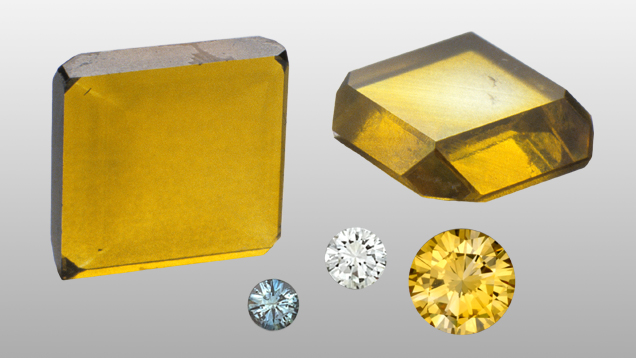
In Russia, the cities of Troitsk, Sestroretsk and Novosibirsk are home to centres producing synthetic rough diamonds. In Troitsk, the Technological Institute of Superhard and New Carbon Materials (TISNUM) has developed and implemented their high-pressure and high-temperature method (HPHT) to produce diamonds.
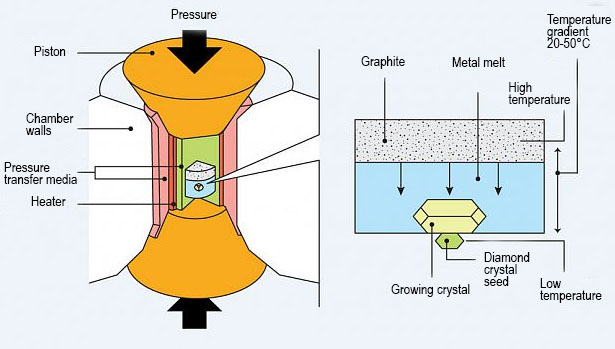
Figure 1. Synthetic diamond production flow-chart (HPHT) (Source: “Populyarnaya Mekhanika”)
At present, TISNUM produces synthetic rough diamonds up to 8 mm in size that are mainly used in nanotechnologies.
In Sestroretsk, New Diamond Technology (NDT) uses also the Chemical Vapor Deposition (CVD) method in addition to the HPHT one. The development of this method of synthetic diamond synthesis in the world started as back as the 1960s, but serious results were obtained in the early 2000s. Under this technology, diamonds are deposited onto a heated substrate consisting of hydrocarbon gas that is ionized using microwave radiation or heated up to high temperatures. In the early 2000s, small startups and major companies like De Beers’s Element Six considered this very method as a promising one.
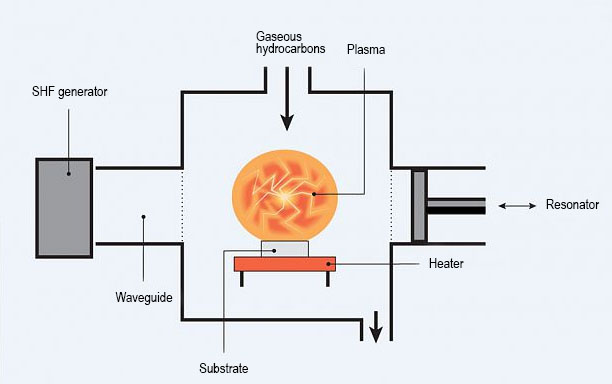
Figure 2. Synthetic diamond production flow-chart (CVD). (Source: “Populyarnaya Mekhanika”)
So far, production of diamonds for industrial needs accounts for 20% of NDT’s output, while the rest are gem quality diamonds. In 2015, the International Gemological Institute (IGI) in Hong Kong issued a certificate for a polished diamond weighing 10.02 carats that was manufactured out of a 32-carat CVD diamond grown by this company. Gem quality diamonds are a profitable part of NDT’s business, but industrial use is the most promising market for large high-quality synthetic rough diamonds because not a single natural rough diamond is suitable for use in special-purpose optics or electronics.
In Novosibirsk, synthetic diamonds are produced using the old Soviet-time technology based on the BARS-type high-pressure press-free installations (called ‘Split Sphere’), which yield only small-size synthetic rough diamonds.
In the USA, synthetic diamonds are produced mainly by two companies – Gemesis in Florida set up in 1996 and using the HPHT-technology, and Apollo Diamond in Boston that patented the CVD-method. In 2003, the first wave of gem quality synthetic diamonds reached the market.
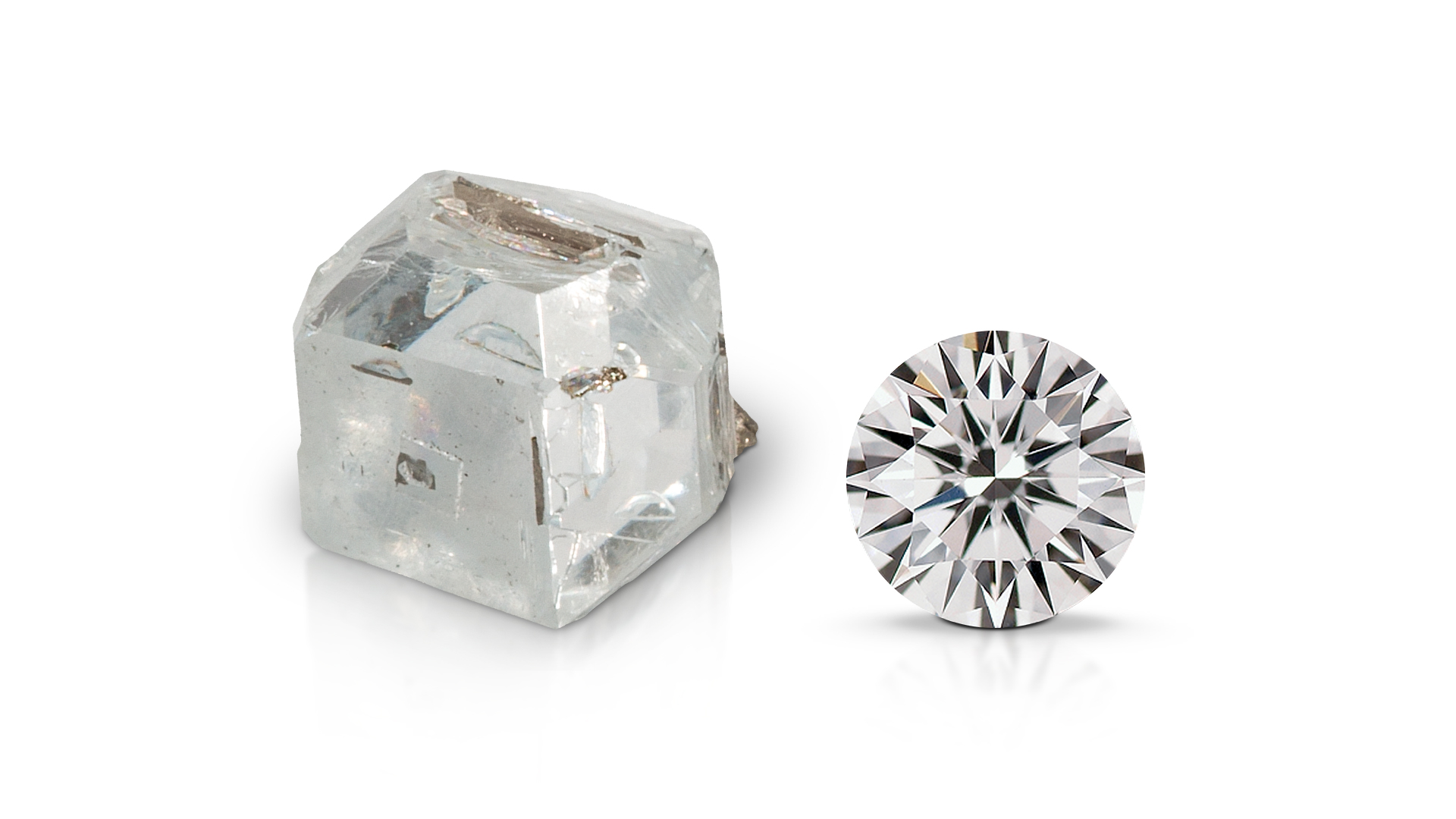
Nowadays, synthetic diamonds are produced in significant quantities (up to 3 mln carats) in China (Henan Huanghe Whirlwind International Co Ltd) and India (IIa Technologies Pte Ltd, registered in Singapore). While the Indians are mainly focused on gem quality diamonds for jewellery, the Chinese are intensifying studies aimed at using synthetic diamonds in cutting-edge technologies.
In Japan, Diamond Wafer Team produces thin but rather wide CVD diamond plates, and according to the scientists of the St. Petersburg Institute of Advanced Manufacturing Technologies, these plates can become the basis for future electronic devices.
De Beers has created their Element Six Technologies Ltd. Currently producing gem-quality synthetic diamonds. The top global diamond producer is said to use the results obtained by Element Six to produce devices detecting synthetic diamonds passed off as natural ones and also studies the prospects of using synthetic diamonds in modern technologies.
ALROSA also considers the possibility of producing synthetic diamonds to study their physical characteristics for more efficient detection of such stones.
HPHT is a process of growing diamond monocrystals at high temperature (about 1500 °C, with a required temperature gradient) and under high pressure (50,000-70,000 atmospheres). A special container carrying a metal melt (iron, nickel, cobalt, etc.) and graphite is hydraulically pressed. One or several seeds – small diamond crystals – are placed on the substrate. Electric current passes through the chamber and heats the melt up to the required temperature. Under these conditions, the metal serves as a solvent and catalyst for the carbon crystallization on the seed in the form of a diamond. The process of growing of one large or several smaller crystals takes from 12 to 13 days.
Besides jewellery, synthetic diamonds can be more widely used in hi-tech industries: microelectronics, laser equipment, semiconductors and space technology. At present, synthetic diamonds are used for polishing modern ultrastrong materials in radio optics and electronics. These are used to manufacture diamond anvils that enable the study of properties of substances and their phase transitions under extra-high pressures of up to 2.5 million atmospheres, optical windows for high-power lasers, high-sensitive temperature sensors, ultra-violet rays, X-Ray and radiation sensors, as well as fast-response heating elements, needles for scanning probe microscopes. Nowadays, synthetic diamonds are used practically in all areas of high technologies, and their role will be growing.
Summing up the above, it can be said that manufacturing polished goods from rough synthetic diamonds means turning them into expensive trinkets. There is a need for more profound study of their physical and chemical properties to use them in new technologies. Production of synthetic diamonds by ALROSA could help to solving a number of production process tasks using synthetic stones instead of natural ones, for example, in trial runs of equipment developed to preserve diamonds undamaged while being processed at concentration plants, as well as for testing devices detecting a wide range of synthetic diamonds.
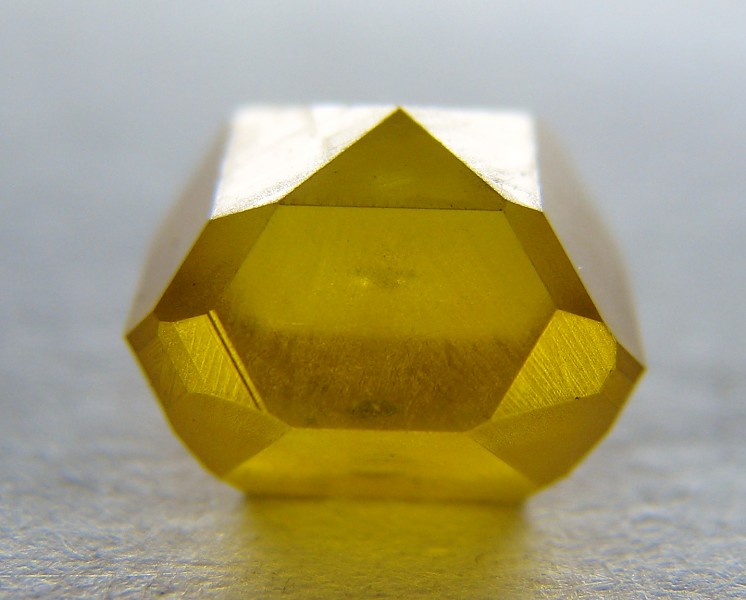
It is also possible to develop a new technology for producing synthetic diamonds which will ensure the economic security of ALROSA and that of Yakutia, if synthetic diamonds will replace natural diamonds in the foreseeable future and there will be no need to mine them. A wide use of synthetic diamonds in state-of-the-art technology could also extend diamond mining at the existing deposits, which are not yet depleted.
Yuri Danilov, Director of “Expert” Information and Analysis Center at Ammosov North-Eastern Federal University

